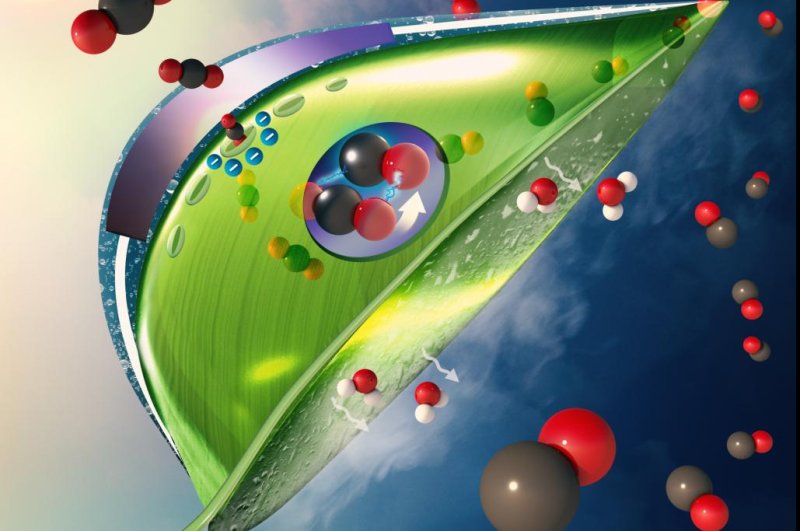The semi-permeable membrane helps the artificial capture CO2, which the technology can convert into carbon monoxide. Photo by Meenesh Singh/UIC
Feb. 13 (UPI) -- Thanks to a breakthrough design by researchers at the University of Illinois at Chicago, artificial leaves are ready to leave the lab and make their debut in the real world.
Carbon emissions continue unabated across much of the planet. For scientists, public policy makers and climate change activists, curbing emissions remains the top strategy for tackling global warming. But researchers are also searching for ways to pull CO2 from the air.
Scientists have invented a variety of carbon-converting devices, but one of the most promising technologies, the artificial leaf, only works in the lab -- until now. Researchers in Chicago have designed a new artificial leaf capable of converting CO2 and water into carbohydrates in the real world.
In the lab, CO2 comes in a pure, concentrated form. Outside, carbon dioxide is more diffuse. Artificial leaves have failed to adapt.
"So far, all designs for artificial leaves that have been tested in the lab use carbon dioxide from pressurized tanks," Meenesh Singh, an assistant professor of chemical engineering at the University of Illinois at Chicago, said in a news release. "In order to implement successfully in the real world, these devices need to be able to draw carbon dioxide from much more dilute sources, such as air and flue gas, which is the gas given off by coal-burning power plants."
Without a direct injection of CO2, artificial leaves must collect and concentrate carbon dioxide to trigger photosynthesis. Chicago researchers encased an artificial leaf in a semi-permeable membrane made of a water-filled quaternary ammonium resin. When water passes through the membrane, it pulls CO2 from the surrounding air.
Inside the membrane, a light absorber coated with catalysts converts the CO2 into carbon monoxide, a starter compound that can be used to create a variety of synthetic fuels.
"By enveloping traditional artificial leaf technology inside this specialized membrane, the whole unit is able to function outside, like a natural leaf," Singh said.
Researchers described their new device in the journal ACS Sustainable Chemistry and Engineering.
According to the calculations of Singh and his colleagues, 360 of the artificial leaves, spread across a 1,600 square-foot area, reduce carbon dioxide levels by 10 percent from air within 330 feet.
"Our conceptual design uses readily available materials and technology, that when combined can produce an artificial leaf that is ready to be deployed outside the lab where it can play a significant role in reducing greenhouse gases in the atmosphere," Singh said.















